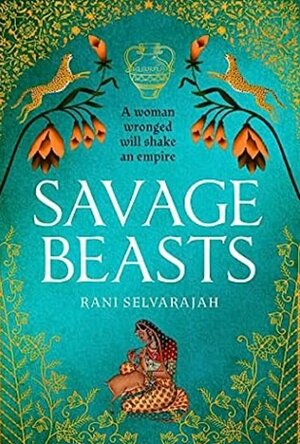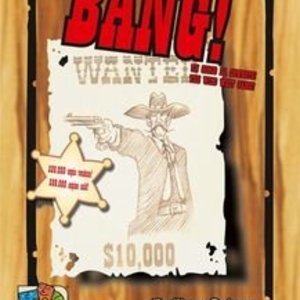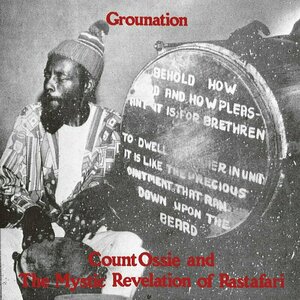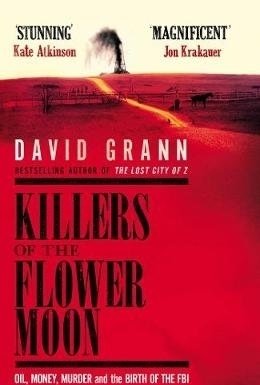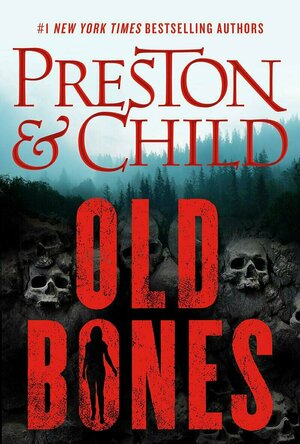Search
Search results
ClareR (6037 KP) rated Savage Beasts in Books
Jul 4, 2023
Savage Beasts is a re-imagining of the story of Medea. This time, Meena (not Medea) betrays her father, the Nawab of Bengal, and runs away with an adventurer called James Chilcott. But Meena’s initial feelings of adventure and excitement soon wear off when she realises that the man she took to be an adventurer, was just an opportunist who spends her money and betrays her in turn.
I thought it was really clever how the Greek myth was woven into Meena’s story, and showed the impact of colonialism. Great Britain doesn’t come out of this well. James’ uncle, Sir Peter Chilcott, is a powerful man in the East India Company. He’s cold, unforgiving, and sees Meena, Indians, Bengali’s, and anyone from anywhere foreign, as below him and little better than an animal.
It made for really uncomfortable reading, and made me so angry!
Meena comes across as being so young but desperate to be older. She’s determined to make a good life for herself and her child - despite how difficult James and his reprehensible family make it for her.
Honestly, by the end I firmly believed they deserved whatever was coming their way!
I listened to this on audiobook, kindly sent to me via NetGalley by HarperCollins UK Audio. The narrator, Shazia Nicholls, really was outstanding. It always amazes me how a good narrator can make all the characters sound so different - especially in this case, the men. Sir Peter came across as a sneering, superior, calculating monster, and in contrast, Meena was both young and wise - and it felt as though she was really there, speaking for herself. Shazia read with such emotion that it became entirely believable. This could well have been an historical memoir as much as a piece of fiction.
Yes, this is described as a Greek retelling, but it has been made into something all of its own. If you know the story of Medea, then you’ll see where in particular it is borrowing from that story - but this is a great story in its own right. It’s powerful, feminist and it’s about colonialism. It’s a story about family, trust and the devastation of betrayal.
Highly recommended!
I thought it was really clever how the Greek myth was woven into Meena’s story, and showed the impact of colonialism. Great Britain doesn’t come out of this well. James’ uncle, Sir Peter Chilcott, is a powerful man in the East India Company. He’s cold, unforgiving, and sees Meena, Indians, Bengali’s, and anyone from anywhere foreign, as below him and little better than an animal.
It made for really uncomfortable reading, and made me so angry!
Meena comes across as being so young but desperate to be older. She’s determined to make a good life for herself and her child - despite how difficult James and his reprehensible family make it for her.
Honestly, by the end I firmly believed they deserved whatever was coming their way!
I listened to this on audiobook, kindly sent to me via NetGalley by HarperCollins UK Audio. The narrator, Shazia Nicholls, really was outstanding. It always amazes me how a good narrator can make all the characters sound so different - especially in this case, the men. Sir Peter came across as a sneering, superior, calculating monster, and in contrast, Meena was both young and wise - and it felt as though she was really there, speaking for herself. Shazia read with such emotion that it became entirely believable. This could well have been an historical memoir as much as a piece of fiction.
Yes, this is described as a Greek retelling, but it has been made into something all of its own. If you know the story of Medea, then you’ll see where in particular it is borrowing from that story - but this is a great story in its own right. It’s powerful, feminist and it’s about colonialism. It’s a story about family, trust and the devastation of betrayal.
Highly recommended!
Purple Phoenix Games (2266 KP) rated BANG! in Tabletop Games
Jun 12, 2019
“I’m gonna bang you.” Taken out of context, one might be slapped for saying such things. While playing a rousing game of BANG! The Dice Game, it’s only too common. To “bang” someone (in this game) is to shoot them. With a gun. While Purple Phoenix Games does not condone violence or murder, you gotta admit that banging your friends with no risk of bodily harm is definitely exciting!
Okay, so at its Wild West heart, BANG! The Dice Game is just that: a dice game. Have you played Yahtzee! before? Or anything with the Yahtzee! mechanic? You know, you throw some dice, save one or more for scoring, and can re-roll up to twice more to try to get the desired result? Well now you know how to play BANG! The Dice Game – mostly.
What makes this different and more exciting than Yahtzee! is that everyone will have a special identity which affords them a special player power. It could be re-rolling a specific die face again, or minimizing damage from an attack. Add to that the fact that everyone is also dealt a role card to determine their team affiliation – Sheriff and Deputy, Outlaws, or the Renegade. The Sheriff wins if the bad guys are eliminated, the Deputy wins if the Sheriff survives, the Outlaws win if the Sheriff is eliminated, and the Renegade wins if they are the last one standing.
Now, I didn’t mention that there are “Indians” who could possibly shoot arrows at the players because it’s not politically correct, but this is set in the Old West, and that’s unfortunately what they called Native Americans, and that’s the terminology that is used in the game.
This game boasts a play experience that is fast, engaging on every turn (even the other players’), easy to learn, and just plain hilarious fun. Yes, you could be eliminated in a game, but games typically last like 15-20 minutes, so you don’t have to wait long to get back in the fight.
With easy, fast, and fun gameplay, an interesting theme to role play, and great components, Purple Phoenix Games gives this one a rootin’ tootin’ 13 / 18 (Josh hasn’t played it yet).
https://purplephoenixgames.wordpress.com/2019/01/02/bang-the-dice-game-review/
Okay, so at its Wild West heart, BANG! The Dice Game is just that: a dice game. Have you played Yahtzee! before? Or anything with the Yahtzee! mechanic? You know, you throw some dice, save one or more for scoring, and can re-roll up to twice more to try to get the desired result? Well now you know how to play BANG! The Dice Game – mostly.
What makes this different and more exciting than Yahtzee! is that everyone will have a special identity which affords them a special player power. It could be re-rolling a specific die face again, or minimizing damage from an attack. Add to that the fact that everyone is also dealt a role card to determine their team affiliation – Sheriff and Deputy, Outlaws, or the Renegade. The Sheriff wins if the bad guys are eliminated, the Deputy wins if the Sheriff survives, the Outlaws win if the Sheriff is eliminated, and the Renegade wins if they are the last one standing.
Now, I didn’t mention that there are “Indians” who could possibly shoot arrows at the players because it’s not politically correct, but this is set in the Old West, and that’s unfortunately what they called Native Americans, and that’s the terminology that is used in the game.
This game boasts a play experience that is fast, engaging on every turn (even the other players’), easy to learn, and just plain hilarious fun. Yes, you could be eliminated in a game, but games typically last like 15-20 minutes, so you don’t have to wait long to get back in the fight.
With easy, fast, and fun gameplay, an interesting theme to role play, and great components, Purple Phoenix Games gives this one a rootin’ tootin’ 13 / 18 (Josh hasn’t played it yet).
https://purplephoenixgames.wordpress.com/2019/01/02/bang-the-dice-game-review/
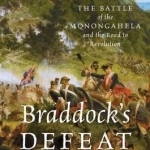
Braddock's Defeat: The Battle of the Monongahela and the Road to Revolution
Book
On July 9, 1755, British and colonial troops under the command of General Edward Braddock suffered a...
Haley Mathiot (9 KP) rated Spring for Susannah in Books
Apr 27, 2018
Okay. So. I got this in the mail and read it through completely the same day. That's got to be worth something.
I loved the premise of this book. It sounded so sweet, it sounded like it had a lot of potential. And I loved it: up until the halfway mark.
Halfway through, Susannah, seemingly out of nowhere, storms out of the house and tells her husband she's leaving. One minute she was fine, and she was beginning to love him, and the next minute, that horrible smelly house is just too much for her. It made no sense.
Also, their arguments were like that (what few of them they had.) on minute they were fine and the next minute they have a little bickering or frustration with each other, and he's like "if it's that bad for you, we'll get divorced." (not an exact quote, but it was something like that).
Then he left her. It was tolerable up until that point. But then he just snapped, and he left her. The locusts came back and he wouldn't listen to her, he just left and was like "I'll bring you home money because now I can't support you." He went all Edward Cullen on me just as I was really beginning to like him!
And then she found out she was pregnant.
And then he gets captured by Indians.
And then she thinks he's dead and two other guys say they'll marry her.
A little bit of plot overkill, maybe?
I was really disappointed. It would have been so much better if the conflicts were more realistic, and the plot consisted of less events that were more pointed towards the same thing.
Then there was her salvation. She wasn't really a christian before, and her faith didn't seem much improved by the end either. I was hoping for a heartbreaking realization or a sacrifice or a change, and all I saw was "huh I guess he's on to something, okay I'll pray too. God please give me back my husband."
Because of all that, near the end I found myself skimming and reading just the dialogue so I could get to the end. And the very end could have had so much more emotion, so much more response, but it just felt very dead.
I really wish I had loved this book because it sounded so adorable. If only it hadn't turned at that halfway point.
Recommended for ages 15+ for one scene in which the doctor gives some advice to the married couple
I loved the premise of this book. It sounded so sweet, it sounded like it had a lot of potential. And I loved it: up until the halfway mark.
Halfway through, Susannah, seemingly out of nowhere, storms out of the house and tells her husband she's leaving. One minute she was fine, and she was beginning to love him, and the next minute, that horrible smelly house is just too much for her. It made no sense.
Also, their arguments were like that (what few of them they had.) on minute they were fine and the next minute they have a little bickering or frustration with each other, and he's like "if it's that bad for you, we'll get divorced." (not an exact quote, but it was something like that).
Then he left her. It was tolerable up until that point. But then he just snapped, and he left her. The locusts came back and he wouldn't listen to her, he just left and was like "I'll bring you home money because now I can't support you." He went all Edward Cullen on me just as I was really beginning to like him!
And then she found out she was pregnant.
And then he gets captured by Indians.
And then she thinks he's dead and two other guys say they'll marry her.
A little bit of plot overkill, maybe?
I was really disappointed. It would have been so much better if the conflicts were more realistic, and the plot consisted of less events that were more pointed towards the same thing.
Then there was her salvation. She wasn't really a christian before, and her faith didn't seem much improved by the end either. I was hoping for a heartbreaking realization or a sacrifice or a change, and all I saw was "huh I guess he's on to something, okay I'll pray too. God please give me back my husband."
Because of all that, near the end I found myself skimming and reading just the dialogue so I could get to the end. And the very end could have had so much more emotion, so much more response, but it just felt very dead.
I really wish I had loved this book because it sounded so adorable. If only it hadn't turned at that halfway point.
Recommended for ages 15+ for one scene in which the doctor gives some advice to the married couple
Moses Boyd recommended Grounantion by Count Ossie & The Mystic Revelation of Rastafari in Music (curated)
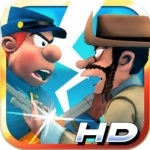
The Bluecoats - North vs South
Games and Entertainment
App
The Bluecoats - North vs South UNIVERSAL, colorful strategy! ¤ New : Multiplayer ! ¤ ...
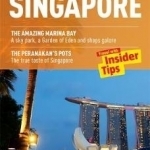
Singapore Marco Polo Pocket Guide
Book
Marco Polo Singapore: the Travel Guide with Insider Tips. Fully revised and updated for 2017. Now...
Suswatibasu (1703 KP) rated Killers of the Flower Moon: The Osage Murder and the Birth of the FBI in Books
Nov 24, 2017 (Updated Nov 24, 2017)
Mind-blowing and a disconcerting read
I can say without a doubt, this is one of the best novels I've read this year. It is a disturbing and excellent real-life account of the plight of Native Americans who found themselves the unwitting beneficiaries of a financial boom in the 1920's after oil was discovered under the previously barren and worthless reservation they were moved to.
This fantastic book relates to a story covered in blood, racism and greed. Oil, black gold, made the Plains Osage tribe incredibly wealthy. By the 1890's, the remnants of this great people were in the scrub lands of Northern Oklahoma.
Their life was continually harsh, the soil poor. In the late 1890's, by chance, oil was struck in Osage County, flowing in abundance and in great demand. From 1918 to 1928, $202 million was paid to the tribe which by then numbered around 3000, transforming their lives. 680 barrels were obtained in a day in 1920 from a strike at Burbank, angering the whites and thus began the "Reign of Terror" in which hundreds of the Osage tribe members were subsequently killed in the most horrendous display of corruption.
The book itself begins in 1921 with an Osage woman who had a share of the mineral riches to be found under the Osage land. Mollie like others was subject to a law that treated her tribe as juveniles whose estates had to be administered by white guardians, that is local lawyers and businessmen, appointed by local courts.
Guardianship was unpoliced and few records were kept. Fraud was therefore prevalent and many of the local white community participated in corruption - murder was widespread as a result. Mollie's sister, Anna, was the first noticeable murder in which she was shot and killed, launching a major probe into similar killings in the area. Many other murders were committed over the following years, with poisoning as the most common method of killing. Essentially it was a covert form of genocide.
The locals refused to act, partly due to fear or involvement in this heinous plot, so J. Edgar Hoover, who was the first president of the FBI, became involved in the investigation. He sent a tall Texas Ranger called Tom White to scrutinise an epic series of murders in which even investigators were targets.
What follows is not only history but a riveting detective story and the book demonstrates yet again the enormous cost of American nationhood. It provides some fascinating insight into the early workings of the FBI (not least Hoover's nascent megalomania) for whom this was a celebrated case and a valuable reminder for folk who thought the persecution of American Indians ended in the late 19th century. Author and journalist David Grann does a superb job in collating all of the information with dozens of pages solely highlighting attributions and references - it is thorough and well-researched. Therefore it is hardly surprising that Hollywood has snapped up this book to turn it into a major motion picture - let's hope they don't whitewash history once again.
This fantastic book relates to a story covered in blood, racism and greed. Oil, black gold, made the Plains Osage tribe incredibly wealthy. By the 1890's, the remnants of this great people were in the scrub lands of Northern Oklahoma.
Their life was continually harsh, the soil poor. In the late 1890's, by chance, oil was struck in Osage County, flowing in abundance and in great demand. From 1918 to 1928, $202 million was paid to the tribe which by then numbered around 3000, transforming their lives. 680 barrels were obtained in a day in 1920 from a strike at Burbank, angering the whites and thus began the "Reign of Terror" in which hundreds of the Osage tribe members were subsequently killed in the most horrendous display of corruption.
The book itself begins in 1921 with an Osage woman who had a share of the mineral riches to be found under the Osage land. Mollie like others was subject to a law that treated her tribe as juveniles whose estates had to be administered by white guardians, that is local lawyers and businessmen, appointed by local courts.
Guardianship was unpoliced and few records were kept. Fraud was therefore prevalent and many of the local white community participated in corruption - murder was widespread as a result. Mollie's sister, Anna, was the first noticeable murder in which she was shot and killed, launching a major probe into similar killings in the area. Many other murders were committed over the following years, with poisoning as the most common method of killing. Essentially it was a covert form of genocide.
The locals refused to act, partly due to fear or involvement in this heinous plot, so J. Edgar Hoover, who was the first president of the FBI, became involved in the investigation. He sent a tall Texas Ranger called Tom White to scrutinise an epic series of murders in which even investigators were targets.
What follows is not only history but a riveting detective story and the book demonstrates yet again the enormous cost of American nationhood. It provides some fascinating insight into the early workings of the FBI (not least Hoover's nascent megalomania) for whom this was a celebrated case and a valuable reminder for folk who thought the persecution of American Indians ended in the late 19th century. Author and journalist David Grann does a superb job in collating all of the information with dozens of pages solely highlighting attributions and references - it is thorough and well-researched. Therefore it is hardly surprising that Hollywood has snapped up this book to turn it into a major motion picture - let's hope they don't whitewash history once again.
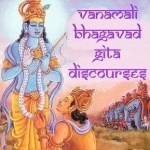
Bhagavad Gita Discourses
Podcast
The Song Celestial unfolds a dialogue of the advice given by an avatar or God incarnate. The...
Donner Party tale (1 more)
Lots of mystery
Inconsistencies (1 more)
Changes characters referred name too much
Authors Preston and Child did such a great job on 'Old Bones' that once you start reading, you won't be able to put it down.
'Old Bones' follows two women, Nora Kelly and Corrie Swanson, with a small segment following a man named Clive Benton, all of who end up being intertwined within this one novel. The entire story revolves around the dark history of the cannibalistic Donner Party, while bringing in fictitious elements to give the readers a well-rounded adventure.
The story gets rolling after Benton visits Kelly with a historical diary that belonged to a member of the Donner Party- - - Kelly is a well-known archaeologist, while Benton is an accredited historian - - - Benton tells Kelly that the journal revealed a lost camp which had never been discovered by anyone, and that this camp could be one of the biggest archaeological finds of the century. While Kelly has to convince the director of the Archaeology Institute to fund the expedition, Benton springs on her and the director that there is a possibility of twenty million dollars worth of gold coins that belonged to a member of the Donner Party could still be located at this lost camp, and, of course, the director quickly agrees to fund the expedition.
Before this, I have never read a book by Preston and Child, but after reading 'Old Bones,' I am anxious to read their other works. The writing is fluid, and keeps the pace going quite well, and the transition between the two main characters is done flawlessly without any confusion as to whose view point you are viewing. The fictitious take on the historical Donner Party is done masterfully enough that even I had to go back to actual historic documents to see what was true and what was not. In one book, readers get dark history, paranormal elements, archaeology, thriller moments, mystery and suspense.
Although the story is a well-written one, there is one scene that could have had great potential, but nothing ever came of it: "Taking a few more steps, she passed through a particularly dense stand of trees and suddenly emerged into a roughly circular clearing. Odd: there was no reason for a break like this in such thick forest. She shone her light around, but there was nothing: just a soft bed of green moss, undisturbed by tracks, and a few scattered boulders." The way this scene is written leaves readers to believe that this may be important later on, but the area is unfortunately never mentioned again.
The story brings FBI agent Swanson into the lives of Benton and Kelly after a string of grave robberies and one presumed murder takes place; the former and latter have one thing in common: they are descendants of a member belonging to the Donner Party.
" 'So where do we fit into this?' asked Nora.
'The commonality I referred to. All four individuals were descended from a single person: a man named Parkin.'
Nora saw Clive start in surprise. 'Albert Parkin?' he asked. 'Of the Donner Party?'
'Exactly. And I've been led to understand he's one of the individuals in the camp you're excavating.' " Agent Swanson isn't exactly welcomed with open arms at the expedition.
The amount of archaeological understanding that was put into this novel is astounding. Preston and Child relay a lot of terms and devices used in the career field such as when Benton uses a bamboo pick to loosen the surface of a quad area and a whisk to gently work dirt away from findings. But this story isn't all archaeological terms, there's also a lot of great development among the characters.
These characters are written differently just enough that the reader should be able to tell them apart easily. Kelly is a leading archaeologist, who has led many different expeditions, but she is also still dealing with the grief of losing her husband years before. Benton is a historian that is a descendant of a member belonging to the Donner Party,and Swanson is a junior FBI agent that is eager to work on her first active case. Even minor characters are distinct among themselves.
Yet, the story is not flawless, there are quite a few inconsistencies, but the major problem I have found with the novel is the changing of characters' names in which they are addressed by. One scene, Nora would be referred to as Kelly - her last name - then more than usually the next paragraph, she would be called Nora. This happens with the main characters too often than it should, that it can confuse the reader and upset the flow of the story itself.
And unfortunately, the paranormal and horror elements are few and far between. We get an amazing retelling of the Donner Party tragedy not once, but throughout the story, reliving the cannibalism that took place, as well as the fictional element of gold leading to murder:
" 'Then you'll recall that when Wolfinger's wagon became stuck while crossing the Great Salt Lake Desert, two men - - - Reinhardt and Spitzer- - - volunteered to go back and help dig it out. Those two men returned, claiming Indians had killed Wolfinger.'
' Yes, yes, ' Dr. Fugit said, concealing a growing impatience.
'Well, that was a lie. Even at the time the members of the party were suspicious that something untoward had happened to Wolfinger. Reinhardt and Spitzer were viewed with a great deal if suspicion, and the two men afterwards kept to themselves and were somewhat ostracized by the rest. When Reinhardt was dying of starvation in the Lost Camp, he made a deathbed confession: Wolfinger had not been killed by Indians. Reinhardt and Spitzer had gone back, murdered Wolfinger, and taken his gold.' He paused. ' This information has been known to historians for over a century, but nobody, incredibly enough, thought to ask the next question: what happened to the gold? ' "
I highly recommend this book to fans of Thomas Harris; the writing is very similar and the character Swanson reminds me a lot of Harris' character Clarice Starling (refer to 'Silence of the Lambs' and 'Hannibal'). I also recommend this book to anyone who enjoys history, especially that of dark history, such as the Donner Party tale.
'Old Bones' follows two women, Nora Kelly and Corrie Swanson, with a small segment following a man named Clive Benton, all of who end up being intertwined within this one novel. The entire story revolves around the dark history of the cannibalistic Donner Party, while bringing in fictitious elements to give the readers a well-rounded adventure.
The story gets rolling after Benton visits Kelly with a historical diary that belonged to a member of the Donner Party- - - Kelly is a well-known archaeologist, while Benton is an accredited historian - - - Benton tells Kelly that the journal revealed a lost camp which had never been discovered by anyone, and that this camp could be one of the biggest archaeological finds of the century. While Kelly has to convince the director of the Archaeology Institute to fund the expedition, Benton springs on her and the director that there is a possibility of twenty million dollars worth of gold coins that belonged to a member of the Donner Party could still be located at this lost camp, and, of course, the director quickly agrees to fund the expedition.
Before this, I have never read a book by Preston and Child, but after reading 'Old Bones,' I am anxious to read their other works. The writing is fluid, and keeps the pace going quite well, and the transition between the two main characters is done flawlessly without any confusion as to whose view point you are viewing. The fictitious take on the historical Donner Party is done masterfully enough that even I had to go back to actual historic documents to see what was true and what was not. In one book, readers get dark history, paranormal elements, archaeology, thriller moments, mystery and suspense.
Although the story is a well-written one, there is one scene that could have had great potential, but nothing ever came of it: "Taking a few more steps, she passed through a particularly dense stand of trees and suddenly emerged into a roughly circular clearing. Odd: there was no reason for a break like this in such thick forest. She shone her light around, but there was nothing: just a soft bed of green moss, undisturbed by tracks, and a few scattered boulders." The way this scene is written leaves readers to believe that this may be important later on, but the area is unfortunately never mentioned again.
The story brings FBI agent Swanson into the lives of Benton and Kelly after a string of grave robberies and one presumed murder takes place; the former and latter have one thing in common: they are descendants of a member belonging to the Donner Party.
" 'So where do we fit into this?' asked Nora.
'The commonality I referred to. All four individuals were descended from a single person: a man named Parkin.'
Nora saw Clive start in surprise. 'Albert Parkin?' he asked. 'Of the Donner Party?'
'Exactly. And I've been led to understand he's one of the individuals in the camp you're excavating.' " Agent Swanson isn't exactly welcomed with open arms at the expedition.
The amount of archaeological understanding that was put into this novel is astounding. Preston and Child relay a lot of terms and devices used in the career field such as when Benton uses a bamboo pick to loosen the surface of a quad area and a whisk to gently work dirt away from findings. But this story isn't all archaeological terms, there's also a lot of great development among the characters.
These characters are written differently just enough that the reader should be able to tell them apart easily. Kelly is a leading archaeologist, who has led many different expeditions, but she is also still dealing with the grief of losing her husband years before. Benton is a historian that is a descendant of a member belonging to the Donner Party,and Swanson is a junior FBI agent that is eager to work on her first active case. Even minor characters are distinct among themselves.
Yet, the story is not flawless, there are quite a few inconsistencies, but the major problem I have found with the novel is the changing of characters' names in which they are addressed by. One scene, Nora would be referred to as Kelly - her last name - then more than usually the next paragraph, she would be called Nora. This happens with the main characters too often than it should, that it can confuse the reader and upset the flow of the story itself.
And unfortunately, the paranormal and horror elements are few and far between. We get an amazing retelling of the Donner Party tragedy not once, but throughout the story, reliving the cannibalism that took place, as well as the fictional element of gold leading to murder:
" 'Then you'll recall that when Wolfinger's wagon became stuck while crossing the Great Salt Lake Desert, two men - - - Reinhardt and Spitzer- - - volunteered to go back and help dig it out. Those two men returned, claiming Indians had killed Wolfinger.'
' Yes, yes, ' Dr. Fugit said, concealing a growing impatience.
'Well, that was a lie. Even at the time the members of the party were suspicious that something untoward had happened to Wolfinger. Reinhardt and Spitzer were viewed with a great deal if suspicion, and the two men afterwards kept to themselves and were somewhat ostracized by the rest. When Reinhardt was dying of starvation in the Lost Camp, he made a deathbed confession: Wolfinger had not been killed by Indians. Reinhardt and Spitzer had gone back, murdered Wolfinger, and taken his gold.' He paused. ' This information has been known to historians for over a century, but nobody, incredibly enough, thought to ask the next question: what happened to the gold? ' "
I highly recommend this book to fans of Thomas Harris; the writing is very similar and the character Swanson reminds me a lot of Harris' character Clarice Starling (refer to 'Silence of the Lambs' and 'Hannibal'). I also recommend this book to anyone who enjoys history, especially that of dark history, such as the Donner Party tale.
